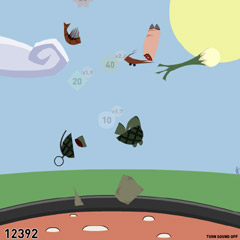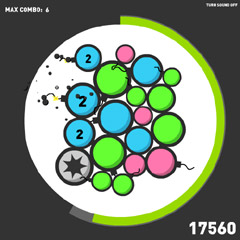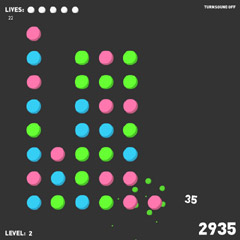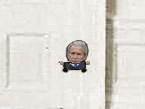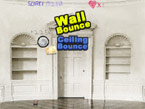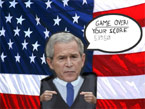I can’t believe it’s been already five months since my last postmortem. I’ve been skipping my responsibilities is because my postmortems have tendencies to become these huge 3000+ words long monsters. I’ll try to write this one in a more compact way, so it’s easier to read and to write.
The Development Process
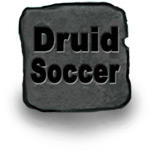
Druid Soccer was published 1st of January 2007, but I started working on it already in October 2006. The game started out as a Mario-esque platformer game. I had some random ideas I wanted to test out, so I cracked together a quick prototype where I could test these things out. While testing out my Mario physics I happened to discover that balancing and bouncing a huge box on top of the player character was actually really fun. So I thought to myself, that if this balancing a box thing is fun, it would be twice as fun if there where two players. And thus Druid Soccer was born.
Well actually it wasn’t called Druid Soccer. The game lacked a theme. I tested the early prototype with my friends and got a very good response from them. Everybody enjoyed it, but it wasn’t until December 2006 that I started working on the game again. And it was then when I decided that I’d skin the game as a druid soccer.
What Went Right
1. Building the toy first
A blue-square-prototype of the game really helped me balance out and tweak little things in the game. And also I got to test the game with my friends and get some initial feedback on the idea. Something I rarely get to do with my prototypes. The game would have never been made if I hadn’t tested the early version with my friends. That’s the price you got pay for creating a two player game. The playtesting takes a lot more time and people, than it does in a single player game.
2. The simple but deep gameplay
Even though the game has a very simple idea and controls, the game has surprisingly deep gameplay. Because of the physics there are all these small cool little tricks that you learn to do. Ways to get the bolder out of your opponents grip, how to throw the boulder from the middle of the playground, etc…
3. The right theme
I think I managed to pick a pretty decent theme for the game. At least for some people it’s been the theme that got stuck in their head. I was also lucky enough to happen to stumble upon some really create Celtic Creative Commons music: The Dongas Tribe.
What Went Wrong
Even though I had lots of fun testing the game with my friends, the feedback that I got from the game wasn’t overly positive. I was actually little surprised by the feedback I got after the game’s release. Here’s why I think the game didn’t go over as well as I had hoped.
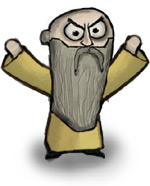
1. Two player game
I think the fact that the game has to be played by two players on the same keyboard, was one of the biggest reasons why the game got so little attention. The game has a single player mode where you play against the computer, but the AI is crappy, and it’s not the same experience to play it against the AI than to play it against your friend.
2. No Juiciness
The second reason I think is the fact the game has a serious lack of juiciness. There are no sound effects or particle effects or stuff like that. There’s very little animation and there’s actually no real award for making a goal. And also somebody pointed out that the game lacked my trademark, which is the big bonuses that drop from the top of the screen (as in Cacodemon and Pluto). I had too much trust in the original prototype, so I thought that game would be enjoyable even with out all that juiciness.
3. Too many nasty bugs
Unfortunately in the final release of the game, there are game stopping bugs. The physics model wasn’t stable enough with the fact that the players were teleported to their goal areas when they made a goal. I didn’t realize this in time, so the game had a bunch of really nasty bugs.
Conclusion
Overall the game is one that has a lot of potential, but I’m afraid that the single player version of the game doesn’t bring that out. The two player game on a same keyboard is always a hazzle to get working, but when you do it’s always fun. Druid Soccer is one of those games that I’d love to redo, so it would get the polish it deserves.
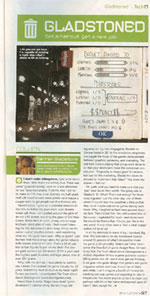 The Truth About Game Development got mentioned in Darren Gladstone’s column in the new Games For Windows -magazine (click the image to read the article). Or maybe mentioned is a too lame of a word, it’s more like the column was mainly about TAGD. It’s almost like a review, expect it’s not. Anyway I found it to be a pretty funny description of the game. And I really liked the part in the end were he wrote that:
The Truth About Game Development got mentioned in Darren Gladstone’s column in the new Games For Windows -magazine (click the image to read the article). Or maybe mentioned is a too lame of a word, it’s more like the column was mainly about TAGD. It’s almost like a review, expect it’s not. Anyway I found it to be a pretty funny description of the game. And I really liked the part in the end were he wrote that: